When it opened last year, Terminal Three at Shenzhen’s Bao’An International Airport was hailed as a milestone in China’s improving design universe, with a ground-breaking honeycomb skin that filled the structure with natural light.
Unfortunately, while the design may have been something new, the construction seems to be decidedly old school as recent rains have filled the 500,000 square metre terminal with flood waters instead of sunbeams.
And the government response to the soggy transport centre appears to also be following the usual script. According to a recent story in The Telegraph,
The Shenzhen Airport Group, which operates the terminal, denied that the leaks were a major problem.
“We found more than 20 leaks, but they were not in the main departure or arrival halls. They did not affect normal operations,” said Yang Haibin, the company’s general manager.He said there had been worse leaks last December, when more than 100 leaks had sprung in the main terminal, and that construction teams had fixed those problems.
This gallery of photos taken from travellers’ Weibo accounts will let you decide for yourself whether the waters would affect your normal operations.
- Innovative drain design at the high tech facility
- How many leaks does this count as?
- Visitors wade their way into the $1 billion airport in December
- White plastic buckets blend gracefully with the airport’s pearly skin
- Terminal 3 at Shenzhen’s Bao’An International Airport on sunnier days
- High tech warning signs of durable ABS plastic are among the terminal’s latest enhancements
- Visitors suffering flight delays can amuse themselves by running their luggage through this slalom course
Built in only three years at a cost of US$1 billion the new terminal is said by the designer, Rome-based Studio Fuksas to resemble a manta ray. No word yet on whether the manta ray-like qualities of the 1.5 kilometre-long building include a love of water.
Speaking to the China Daily, Huang He, Chief Architect at the Beijing Institute of Architectural Design’s chief architect, seemed to think that things are headed in the right direction.
“At the beginning, there were more than 1,000 leakage points, and it was reduced to 100 and now to 22 which is quite normal,” the architect pointed out.
Some observers speculated that the airport might be suffering from substandard construction.
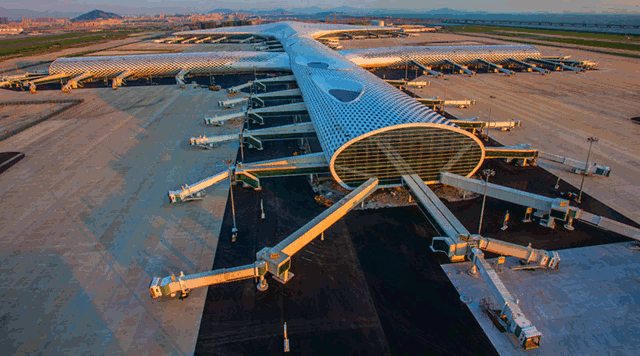
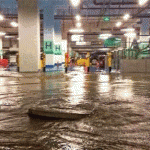
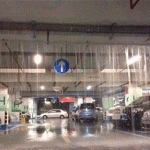


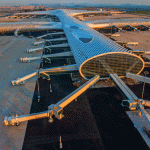
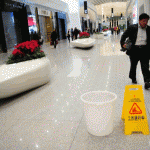
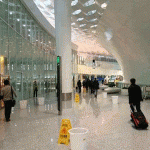
Leave a Reply